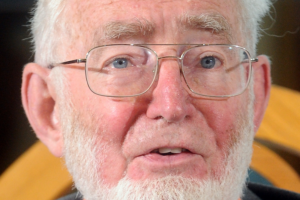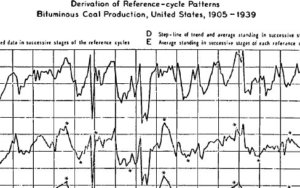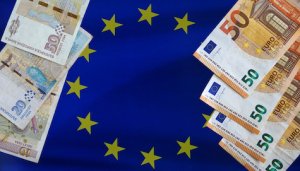Does it reflect a change in the pecking order between theory and empirical work, as once suggested by Krugman? A change in theoretical work itself? And if so, how to characterize it? The requirement that applications should be built in theoretical thinking (‘applied theory’)? Or the standard that a theoretical intuition be presented alongside application/ empirical work in scholarly articles? Or is that story just an administrative artifact, concealing the fact that empirical work is still carried in reference to a prior theoretical framework?
As 1910 was nearing its end, Davis Dewey, who had just accepted the editorship of a new AEA journal, the American Economic Review, was struggling to put together the first issue. A first in AEA publications, he decided to organize book reviews, report notes and articles by subject matter, and chose as his opening category the same as that used in the QJE since 1886: General Work, Theory and its History. It included works on productivity, capital theory, etc. Dewey’s organizational choice did not reflect any dominance of theory, and as a matter of fact, subject matter titles were sometimes presented in alphabetical order. When the AEA classification for literature and personnel was revised and institutionalized during the war, this opening category sailed through largely untouched, in spite of recurring controversies on the analytical and historical dimensions of theoretical work.
The war and postwar decade brought sea changes to the discipline: the displacement of the institutional conception of theoretical work by the rise of a neoclassical, formalized and mathematized approach, the spread of Keynesian ideas, the development of national accounting and data of all stripes, and the development of new techniques of inquiry, including input-output analysis, activity analysis, and econometrics. A consequence was that by the end of 1955, it was felt that the existing scheme was inadequate to classify the growing flow of scholarly articles. As a new revision round was opened, the seemingly administrative task of devising new categories threw AEA officials, in particular AER editor Bernard Haley and former AER interim editor Fritz Machlup, into heated debates over the nature and relationships of theoretical and empirical work.
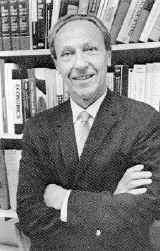
Machlup campaigned for a separate ” Abstract Economic Theory” top category. At the time of the revision, he was engaged in methodological work, striving to find a third way between Terence Hutchison’s “ultraempiricism,” and the “extreme a priorism” of his former mentor, Ludwig Von Mises (see Blaug, ch.4). He believed it was possible to differentiate between “fundamental (heuristic) hypotheses, which are not independently testable,” and “specific (factual) assumptions, which are supposed to correspond to observed facts or conditions.” The former was found in Keynes’s General Theory, and the latter in his Treatise on Money, Machlup explained. He thus proposed that empirical analysis be classified independently, under two categories: “Quantitative Research Techniques” and “Social Accounting, Measurements, and Numerical Hypotheses” (e.g., census data, expenditure surveys, input-output matrices, etc.). On the contrary, Haley wanted every category to cover the theoretical and empirical work related to a given subject matter. In his view, separating them was impossible, even meaningless: “Is there any theory that is not abstract? And, for that matter, is there any economic theory worth its salt that is not applied,” he teased Machlup. Also, he wanted to avoid the idea that “class 1 is theory, the rest are applied … How about monetary theory, international trade theory, business cycle theory?” He accordingly designed the top category to encompass price theory, but also statistical demand analysis, as well as “both theoretical and empirical studies of, e.g., the consumption function [and] economic growth models of the Harrod-Domar variety,” among other subjects. He eschewed any “theory” heading, which he replaced with titles such as “Price system; National Income Analysis.” His scheme eventually prevailed, but “theory” was reinstated in the title of the contentious category:
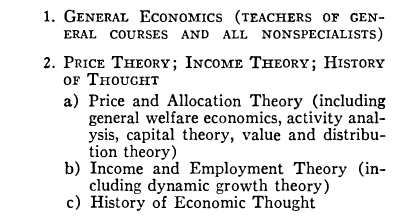
In 1967, as pressures to mechanize, computerize, and standardize classification practices increased in the face of soaring publication size and costs,
Richard Ruggles compiled statistical evidence that showed that the top categories in both the AER classification and the National Science Foundation list of specialties collected too many articles compared with other entries. A good classification was supposed to be discriminatory, and secretary John Williamson soon circulated a proposed revision, which opened with a revamped Theory category:
General Economic Theory
General Equilibrium
Microeconomics
Macroeconomics
Economic Fluctuations
Economic Forecasting
Methodology
History of Economic Thought
Others
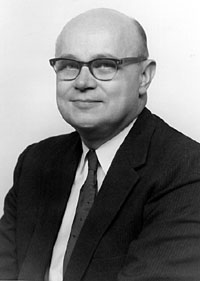
Ruggles immediately pointed out that Theory was a particularly unsuitable heading for a category that was supposed to encompass Economic Fluctuations and Forecasting, since the two specialties essentially comprised empirical work conducted by practitioners. Echoing Haley’s earlier misgivings, he underlined that “many people work in both theory and empirical research, and separating the two was often not possible. Even for economic literature, it may in the future be more reasonable to abolish theory as a major category.” He thus acquiesced to the mix proposed by Williamson, but advised that the use of the word “theory” be restricted to the micro, macro and general equilibrium topics only. William Baumol rather wanted to clean up the category, so that it reflected theoretical work adequately. He suggested that Forecasting should be classified under a new heading, Applied Economics,along with Operations Research. He also advised adding Mathematical Economics and Activity Analysis and Mathematical Programming specialties to his Economic Theory. According to Richard Leftwich, it should also be augmented with Welfare, while Economic Fluctuations would move to Monetary and Fiscal Theory: “actual economic fluctuations and their control is one of the very important reasons for worrying about monetary and fiscal institutions – isn’t it?” he asked. In the end, a General Economic Theory group was established, but within a larger category. Fluctuations and forecasting were collapsed into a second category with economic growth and development topics.

Dropping the separation between theoretical and empirical work was again contemplated by JEL editor John Pencavel, associate editor Drucilla Ekwurzel, and classification consultant Asatoshi Maeshiro, who oversaw a final two-year revision process in 1988-1990. From the outset, the three editors had been adamant “not to place the theoretical and empirical research in separate categories, but to integrate them.” The justification for this approach, as Pencavel later wrote, was that “good research in economics is a blend of theory and empirical work and our procedure asks the author to make a choice when it comes to categorizing his work.”
The reactions to their plan was mixed. There was a sense that, although the Theory category should be replaced by Microeconomics, Macroeconomics, and Quantitative Methods, this “core” should essentially comprise theoretical work, while empirical work belonged in field categories. In July 1988, Pencavel reported that:
People such as Blinder, Deaton, Houthakker, Riley, Sonnenschein, and Taylor support it while Davidson, Green, Kurz and Pollak oppose it. I am sympathetic to Baumol’s statement: ‘I think the merging of the theoretical and empirical studies is desirable if the reader will still be able to distinguish one from another.’ Deaton suggests a suffix code that distinguishes applied articles. My suggestion picks up on Pollak’s proposal of putting theoretical and empirical articles of consumer and producer behavior in separate categories within Microeconomics.
Pencavel, Maeshiro and Ekwurzel generalized this principle to most two-digit categories, which by the end of 1989 were formulated along the following lines:
Consumption and Savings
3-0 General including measurement and data on consumption expenditures
3-1 Theory
3-2 Empirical Analysis
3-3 Forecasting
Yet, as later pointed out by Houthakker, such an organization principle was running counter to their initial integrative plan, so that by the mid-1990s, the editors contemplated “rethink[ing] for the last time our extensive use of the ‘theory’ vs ‘empirical analysis’ distinction.” “We may well be overdoing it,” they pondered. In a last move, they merged all their theory/empirical subclasses. The “theory” label survived in only a few subtitles, such as Game Theory or Value Theory, and only Consumer Behavior and Firm Behavior subjects retained the theory/ empirical work divide. According to the old-to-new classification map provided in the 1991 JEL issue, the 1967 Theory category had fragmented into about 40 dispersed subfields.
Credit: American Economic Association Records, David M. Rubenstein Rare Book & Manuscript Library, Duke University. Permission to quote has been granted by the AEA


